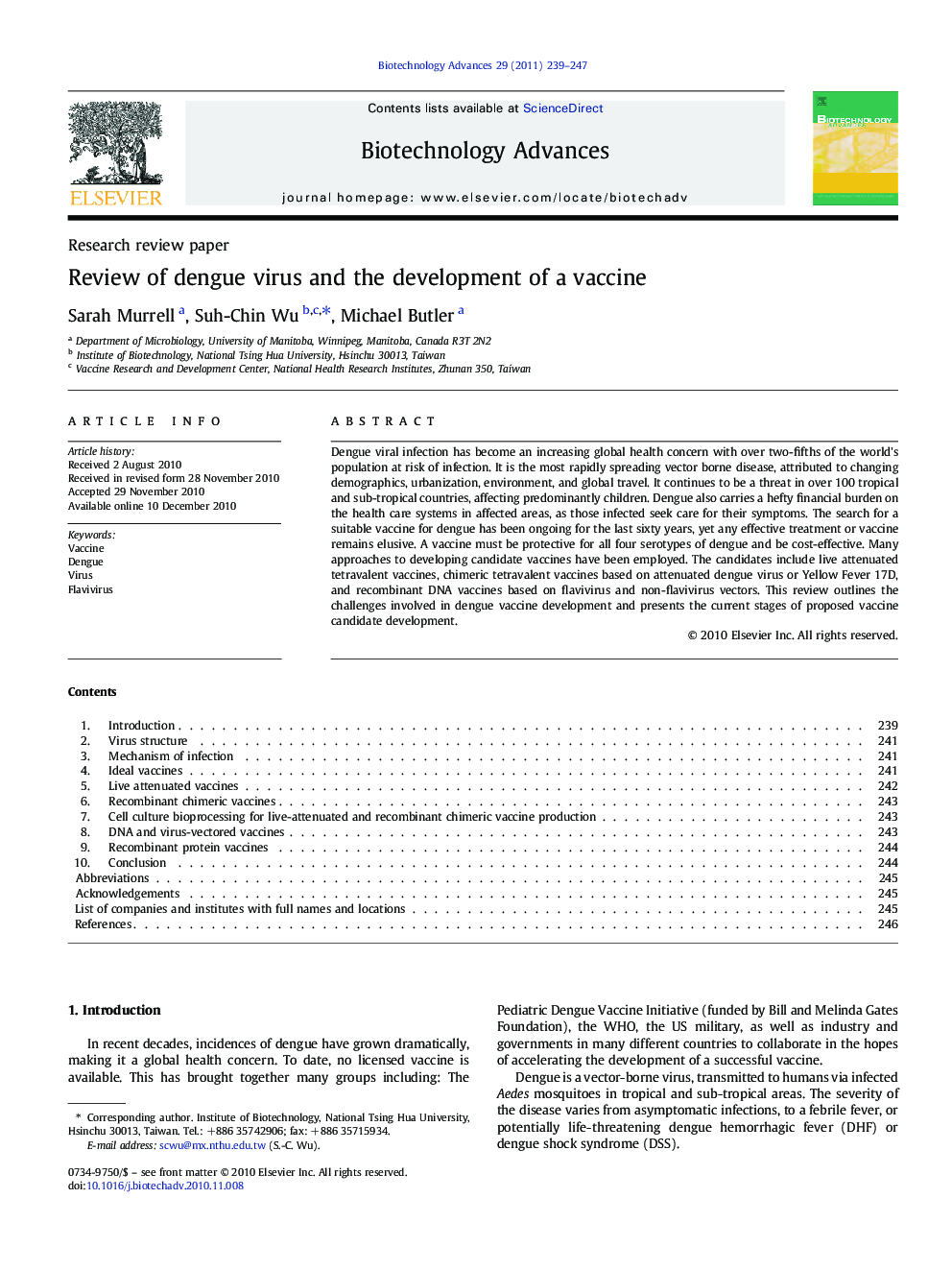| Article ID | Journal | Published Year | Pages | File Type |
|---|---|---|---|---|
| 14577 | Biotechnology Advances | 2011 | 9 Pages |
Dengue viral infection has become an increasing global health concern with over two-fifths of the world's population at risk of infection. It is the most rapidly spreading vector borne disease, attributed to changing demographics, urbanization, environment, and global travel. It continues to be a threat in over 100 tropical and sub-tropical countries, affecting predominantly children. Dengue also carries a hefty financial burden on the health care systems in affected areas, as those infected seek care for their symptoms. The search for a suitable vaccine for dengue has been ongoing for the last sixty years, yet any effective treatment or vaccine remains elusive. A vaccine must be protective for all four serotypes of dengue and be cost-effective. Many approaches to developing candidate vaccines have been employed. The candidates include live attenuated tetravalent vaccines, chimeric tetravalent vaccines based on attenuated dengue virus or Yellow Fever 17D, and recombinant DNA vaccines based on flavivirus and non-flavivirus vectors. This review outlines the challenges involved in dengue vaccine development and presents the current stages of proposed vaccine candidate development.
